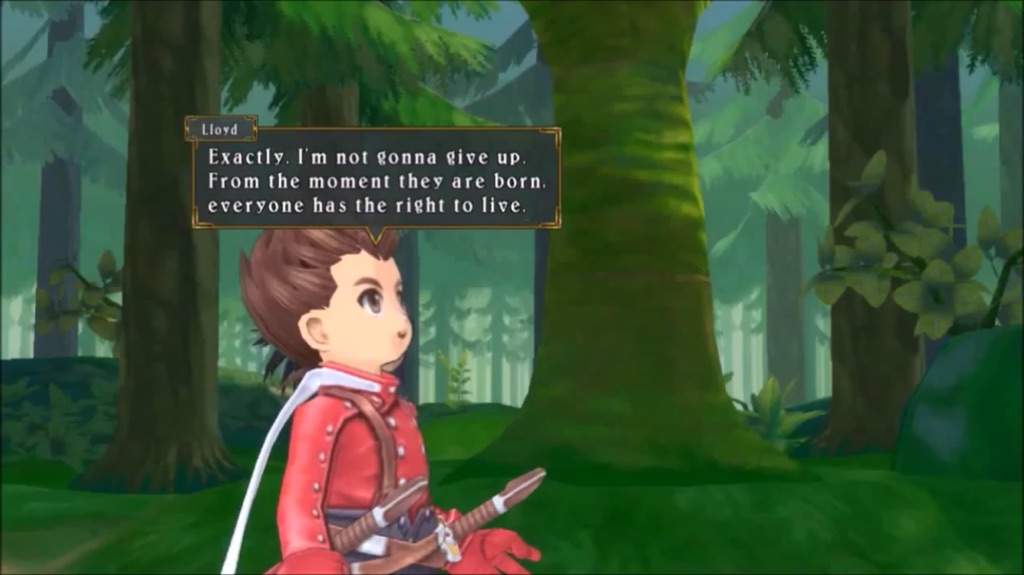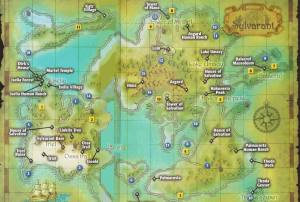Table of Contents
Out of all the games in the Tales series, Tales of Symphonia is the one that holds the highest spot in my heart. I’m sure there are a number of reasons why that might be the case.
You could say I just grew up with it, so I’m looking at it through rose-tinted glasses, for instance. You may even be right there.
But that doesn’t change the fact that many others believe Tales of Symphonia is good, if not one of the best games in the series. Why is that? What makes it good?
As someone who’s beaten it more times than I care to count, I feel as if I’m uniquely qualified to answer that question. In this post, I’ll be explaining to you why I think it’s such a great game.
Why Tales of Symphonia is Good
I’m sure there are many more reasons for Tales of Symphonia’s popularity, but there are several that immediately came to mind for me:
- The characters
- A good story
- A fun combat system
- The ability to make choices that impact the story
- A rich and lively setting
- Excellent voice acting
I’ll dig into each of these reasons a little bit more below.
It has likeable characters.

Have you ever played a game with boring, annoying, or just all-around unlikeable characters? It can be a complete drag, and every minute you spend in-game could be filled with irritation.
I’d say this isn’t a problem with Tales of Symphonia. JRPGs are especially prone to sticking to boring character tropes, but I honestly think this isn’t a huge issue here.
Sure, there are definitely some of the old character archetypes in this game, like the loveable pervert (Zelos) and the overly cheerful one who’s secretly hiding a world of pain (Colette).
But the characters each have their own in-depth backgrounds, hopes, fears, and quirks that set them apart from each other. No two are exactly like, and that makes them feel equally interesting to me.
The story is meaningful, even in today’s world.

While I wouldn’t say Tales of Symphonia was a game intended to be taken as social commentary, it still has a story that’s eerily impactful in a modern setting. The whole plot of the game revolves around discrimination and working to bridge the gaps of ignorance between people.
It also focuses on how people respond to those who are different. On one extreme, you have those who shut away their half-elven children in basements, where no one can see their “shame.” Then you have people like those in your party, who accept those who aren’t purely human or elven, working together to better relations between humans, elves, and those caught in between.
You don’t need to look too far to see which types of situations that story mirrors today.
The combat system is a blast.

It wasn’t that long ago that RPGs almost all had turn-based systems. Some people find this preferable, because that means you don’t have to rely on wonky AI to control your teammates.
I, however, have never liked turn-based combat. It feels clunky and uninteresting to me, which is why I love the system in Tales of Symphonia.
All characters can move and attack simultaneously. With tons of special attacks and spells to choose from, this makes battles feel animated and intriguing. Plus, a lot of the time, the AI of your teammates is tolerable without having to make tweaks to their strategies.
Of course, if you’re not liking the way your AI team fights, you can make adjustments to their strategy, like how much TP they use. This helps you refine your party even further.
Perhaps the biggest drawback to this design is the linear functionality. You can only move straight backwards or forwards, which can be quite awkward at times, especially when there are party members or other monsters in between you and your target. For the most part, this didn’t really affect my ability to enjoy the game, though.
Your choices can impact the game.
This game definitely wouldn’t get a “choices matter” tag on Steam, but there are a few things you can impact with your decisions. For instance, you can affect how much your teammates like you.
Later on in the game, you can get some slight differences in the ending based on the relationships you have with the party members. These choices do help increase the replayability of the game.
If you’re one of those 100% types of players, you’ll probably enjoy being able to go back and see all the potential variations as a result of your decisions. Again, though, you’re not going to see drastic differences, like in a traditionally choice-based game such as Dragon Age.
Nevertheless, this is a refreshing change in JRPGs, which usually have extremely linear and inflexible stories.
The world(s) are rich and lively.

Some games with vast worlds tend to feel surprisingly empty. This is the case with dead MMOs, for instance – there are wide maps, sparsely dotted with NPCs and the very occasional other player.
Of course, Tales of Symphonia isn’t an online game where you’ll encounter other players, so the second half of that description doesn’t apply. However, I never got the feeling I was completely alone in either Sylvarant or Tethe’alla.
There are tons of people to encounter in the towns. Each one has something different to say to you, should you bother talking to them.
Outside of the safety of towns, you’ll encounter roving monsters. Perhaps these vast expanses of wilderness could be considered lonelier, making them kind of uninteresting to explore, but they’re only a small part of the game.
It has excellent voice acting.
A lot of the time, JRPGs use unknown voice actors. This isn’t always an issue, and can usually provide a passable, if not phenomenal, experience.
But there’s something to be said about the quality of well-known voice actors with dependable years of experience. Tales of Symphonia has some of the best in the business among its cast.
One of the most noteworthy actors on its roster is Tara Strong, who’s perhaps most well-known for her portrayal of Harley Quinn in Batman the Animated Series. But the cast also includes the amazingly talented Jennifer Hale (of Mass Effect fame) as Sheena.
With such an amazing cast, you won’t get taken out of the moment by subpar voice acting. Quite the opposite, actually – the cast does an amazing job of bringing the characters to life.
Is Tales of Symphonia Worth Playing?
So, should you bother playing Tales of Symphonia? If you couldn’t guess from my largely glowing praise…yes, I think it’s worth playing.
It’s not a perfect game. Compared to many others, its replay value probably isn’t the best because it’s not going to be drastically different time after time. Furthermore, its multiplayer function is kind of limited because other players can only do anything during combat.
Despite its flaws, though, I think it’s an overall good game. If you get the opportunity (it’s on Steam now!), I strongly recommend playing through it at least once.
Wrap Up
I’m not exaggerating when I say Tales of Symphonia was one of the most influential games from my childhood. This is the one that got me into gaming in the first place. I don’t know if I’d be here today, writing articles for this site, if it weren’t for this game.
Hopefully, I helped convince you to give it a try. There are a lot of compelling reasons to give ToS a chance, whether it’s the strong cast, lovable party, or energetic combat system.
